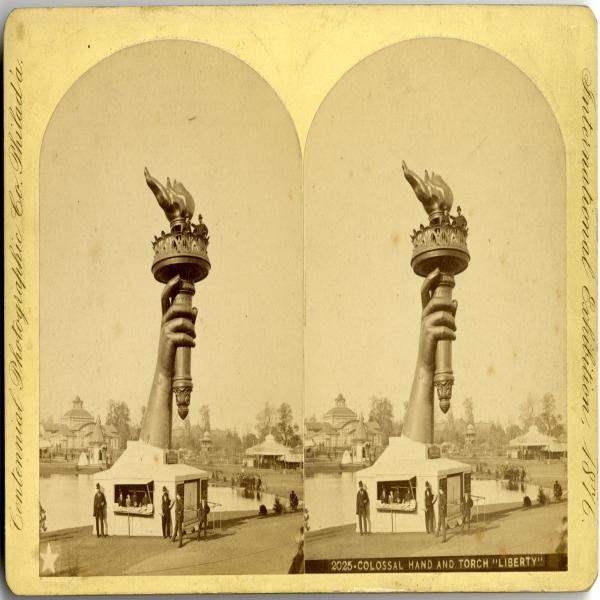Colossal Hand and Torch
Original

Background Notes
"Liberty Enlightening the World," the statue that is today more popularly known as the "Statue of Liberty," was a gift from the French to the people of the United States. The statue was to be given to the United States on the occasion of its centennial in 1876, and French sculptor Frédéric Bartholdi was commissioned to design the gift. Bartholdi originally planned for the sculpture to be completed and presented to the U.S. on July 4, 1876, in time for the centennial. However, construction was delayed and only one small part of the statue was ready for the Centennial Exposition in Philadelphia that year - the right arm and the torch. This stereograph shows attendees at the Exposition visiting the arm and torch, and they could pay to walk up to the torch's balcony.
Stereographs, an early form of three-dimensional photograph, were a popular form of education and entertainment in the latter part of the nineteenth century. The stereograph, otherwise known as the stereogram, stereoptican, or stereo view, was the nineteenth-century predecessor of the Polaroid, with an imaginative flair. Two almost identical photographs were placed side by side on a piece of cardboard. These images were meant to be viewed with a stereoscope, an instrument attributed to Oliver Wendell Holmes circa 1859. Stereography immediately became a commercial success. Stereographs crossed class lines, affordable to rich and poor alike, so these images had a very large audience.